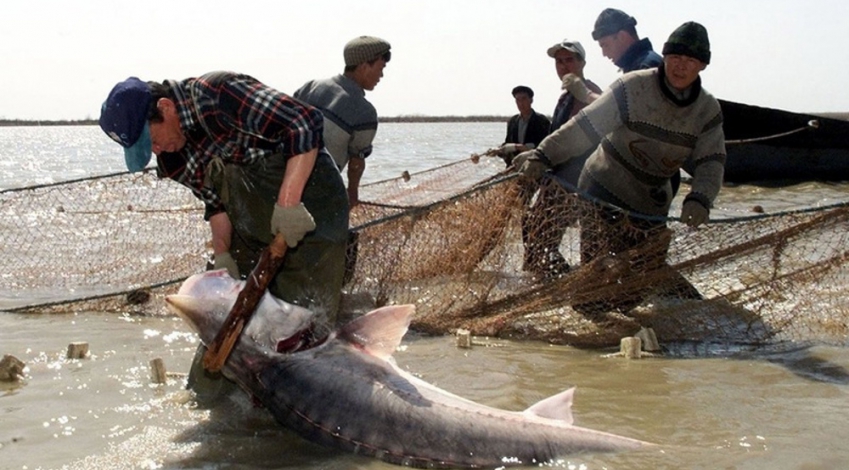Thursday 20 October 2022 - 14:27
Story Code : 401001
Iran, other Caspian states extend ban on sturgeon fishing
Iran, Azerbaijan, Russia, Turkmenistan, and Kazakhstan which border the Caspian Sea have agreed tight export quotas for wild caviar and other sturgeon products.
�According to the agreement of the five states of the Caspian Sea Aquatic Resources Convention, the ban on commercial fishing of sturgeon has been approved for the 11th year and the embargo will continue for another year,� director general of the Sock Enhancement and Conservation of Aquatic Genetic Resources of Iran Nasser Karami Rad said.
The Caspian Sea, the source of four-fifths of the world's black caviar, has been hit by a vast decline in sturgeon stocks due to poaching and illegal trade.
High levels of poaching and illegal trade in the Caspian led to a temporary ban on international trade in wild caviar and other sturgeon products in 2001. At the time the UN Convention on International Trade in Endangered Species of Wild Fauna and Flora (CITES) estimated that illegal trade was ten times greater than legal trade.
To have their proposed quotas published, countries with shared sturgeon stocks must agree amongst themselves on catch and export quotas based on scientific surveys of the stocks, according to CITES, a Swiss-based treaty body which regulates international trade in wildlife.
The agreement covers six wild sturgeon species, including huso huso which produces beluga caviar, the most expensive luxury food item, which can cost up to 600 euros per 100 grams.
Karami Rad said Iranian caviar is one of the best types of the delicacy. He also touched on the long history of the sturgeon stocks enhancement in Iran, �which even reaches up to a hundred years�.
�Iran is one of the leading countries in the field of sturgeon stocks enhancement, which we want to develop along with the ban on commercial fishing,� he said.
Karami Rad said all sturgeon fish caught in the Caspian Sea by Iran are delivered to stock restoration centers. Each year, millions of fingerlings are released into the Caspian Sea from hatcheries in Iran as part of the country�s conservation plan.
�We have four sturgeon stock restoration centers in the three northern provinces of the country - two strategic fish stock restoration centers in Gilan province, one in Mazandaran and one in Golestan, which reproduce and release productive sturgeon fish caught from the sea,� he said.
�Due to the drastic reduction of sturgeon species that are on the brink of extinction, we reproduce about 2 to 3 million pieces in high weights and release them in the sea,� he added.
Sturgeon farming includes protecting females which take up to 18 years to become mature to produce eggs. Poachers usually leave those females to die along with the rest of their catch.
According to Karami Rad, Iran is ranked 14th in the whole sturgeon business. Last year, 16 tonnes of farmed caviar were produced in the country, of which about 5.5 tonnes were exported and about 11 tonnes consumed domestically, he said.
On Monday, fishery science researcher Mohammad Pour-Kazemi said the population of sturgeon fish on the Iranian shores of the Caspian Sea has reached the lowest level in its history.
�According to Iran's fishing statistics, the overall number the five species of sturgeon has reached below 250 in the whole year. Therefore, just as the cheetah and Caspian seal are discussed in the media, serious attention should also be paid to sturgeon,� he said on the sidelines of the specialized meeting of the country's sturgeon breeders.
By PRESS TV
# Tags











